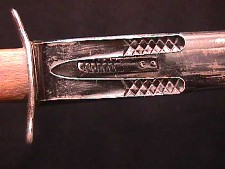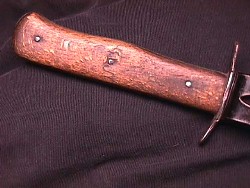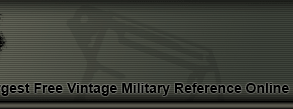
WWII GERMAN KNIFE - FIGHTING TYPE
The Third Reich issued a large number of edge weapons to the military and civilian organizations. somne
of these blades were meant for combat while others were simply a status symbol. The high quality of
construction and beautiful designs make these items desirable military collectibles.
It is interesting to note that while the Germans had a very large number of variations of daggers
and swords the knife featured here was the only fighting knife employed by the German armed
forces. The closest other blade to a fighting knife was the K98 bayonet .
However, that was a bayonet and not strictly a fighting knife. On the other hand, the American
armed forces had no daggers at all, very few swords but a large selection of different
fighting knives.


|
FIGHTING KNIFE ANATOMY
The German fighting knife, also known as the boot knife, was born in the trenches of WWI. but
its use was extended through WWII. While the general shape remained intact, a few different
variations were created. Changes primarily involved the grip where somtimes it has a checkered
pattern carved into its surface.
The German fighting knife was small in size because the idea was to be able to carry it on the
side of the boot.
Consisting of a wooden handle. Smooth construction and light brown color. The pommel section
has a small wooden protrution. The crossguard was very simple. It was formed by a thin piece
of metal with one side angling up a few degrees. The other side remained straight.
THE SCABBARD
The scabbard was originally painted black but through time most of the paint has worn
off showing the metal finish. Notice that the same type of rivets are employed in the
scabbard as those used to attach the grips to the tang.
The scabbard came equipped with a large clip that allowed the knife to be carried on the
belt or in a boot. Its design was formed of three elongated shape fingers. With the middle
section being slightly lower than the rest. A checkered pattern is engraved in about 50% of
each finger as it approaches the tip for the outer sections and closer to the base for the
middle component. This feature was intended to provide added traction so the knife would not
fall from the surface where it was holding to.
|
|
This page is a recognition and identification guide for German bayonets. Multiple
detailed photos of a specific sample are provided. Descriptions point out specific
points that should be noted.
One of the most commonly asked questions is "How much is my German bayonet worth?".
A price guide is included here to address this question. The value of the Nazi bayonets is
reviewed over a period of several years. A trend can be observed. The present worth
of the police sword in the collector's market is illustrated.
This service is provided free of charge to the visitor/enthusiast courtesy of
MilitaryItems.com,
a company dedicated
to the preservation of military history and to providing quality military antiques and
collectibles to museums, institutions and the general public.
|
|
THE BLADE
The shape of the blade is a unique characteristic of the fighting knives. It is a modified
stilleto where about 50% of the blade is double edged (as it approaches the tip) but the other
50% is sinngle edge with a flat spine (close to the base). A few variations of blade shape
were created, however, the design remained fundamentally the same.
One side of the base of the blade has a small marking
consisting of a flat pyramid shape with the number five inside the structure.


THE HANDLE
The handle of the fighting knife is amde of smooth wood and it is riveted together at three different
point. One side shows protruded rounded rivets (below-left) while on the other side the rivets are
flushed with the surface of the handle. The back side of the handle is flat while the front
has an ondulating pattern. This was created so the fingers have a more ergonomic place to
grip.


Many German edge weapons are currently
reproduced.
It is becoming more difficult to be able to tell the fake ones from the real ones because
the quality of the reproductions is improving. The collector must become familiarized with
the construction style and materials employed in the manufacturing of this item.
Attention to the details is critical in order to be able to determine the authenticity of
the collectible.
If you have an interest is seeing other edge weapons of the Third Reich, you can do so by going
to our
WWII German daggers and Swords
identification guide, Where we cover blades from the Heer (Army), Navy (Kriegsmarine), Air Force
(Luftwaffe) and other organizations.
|







